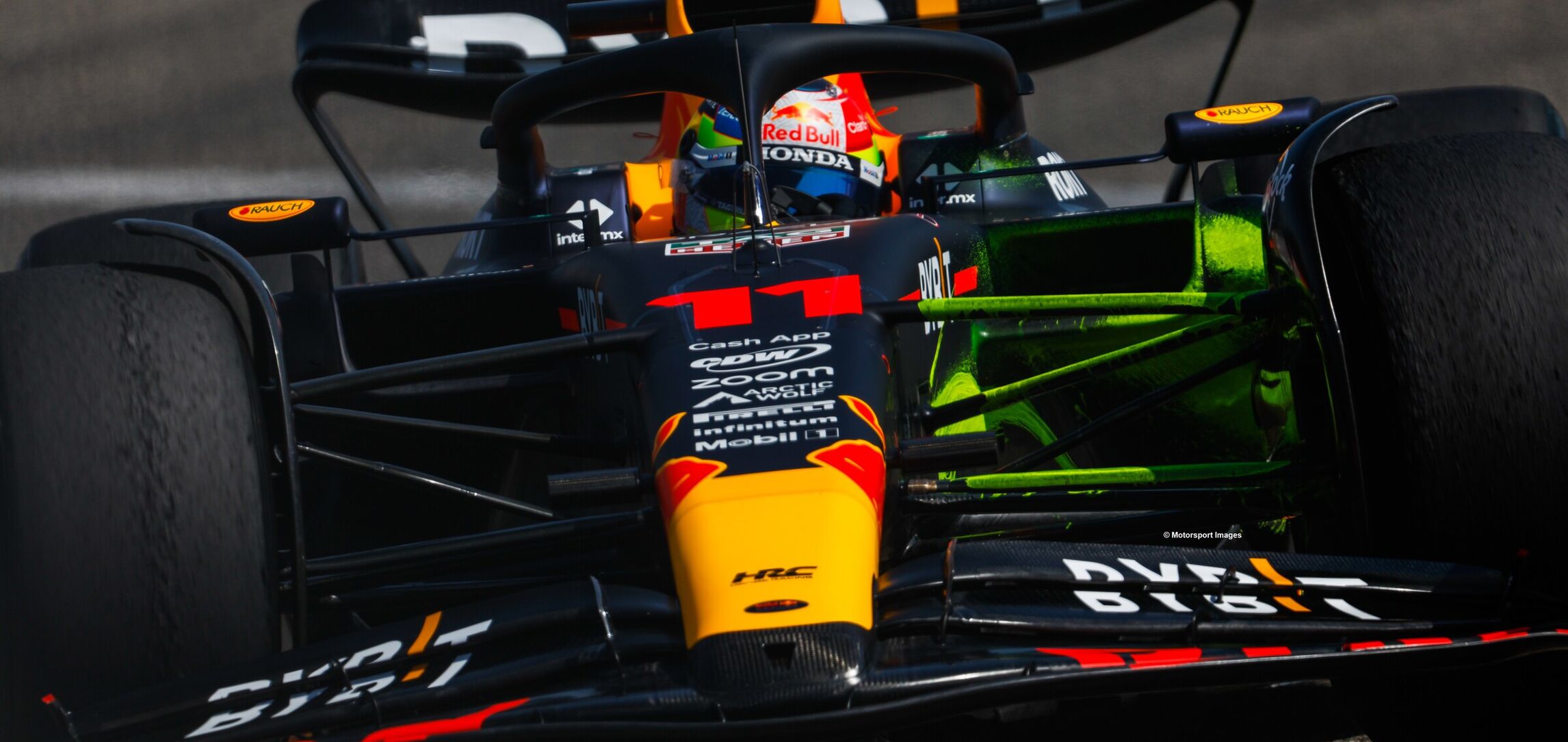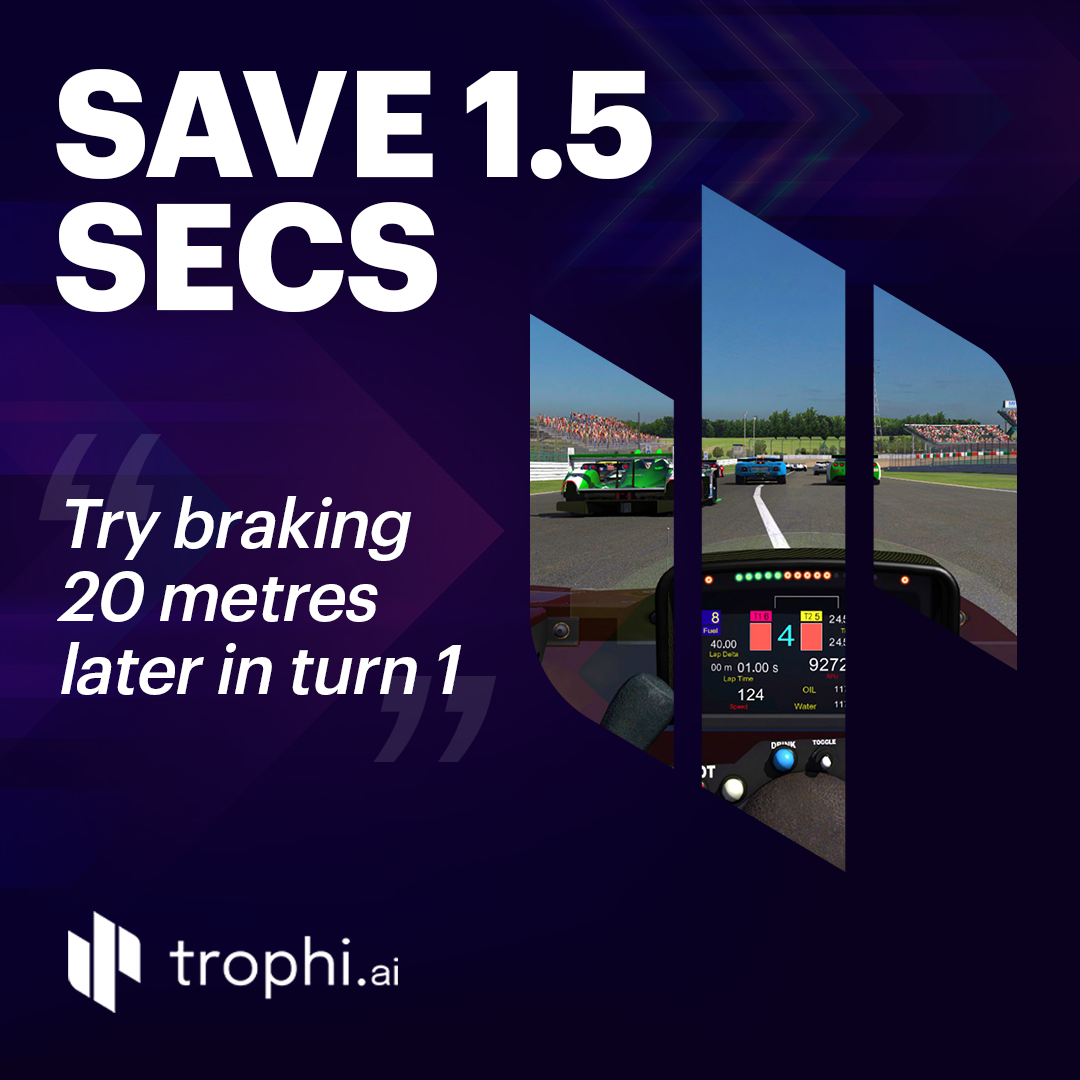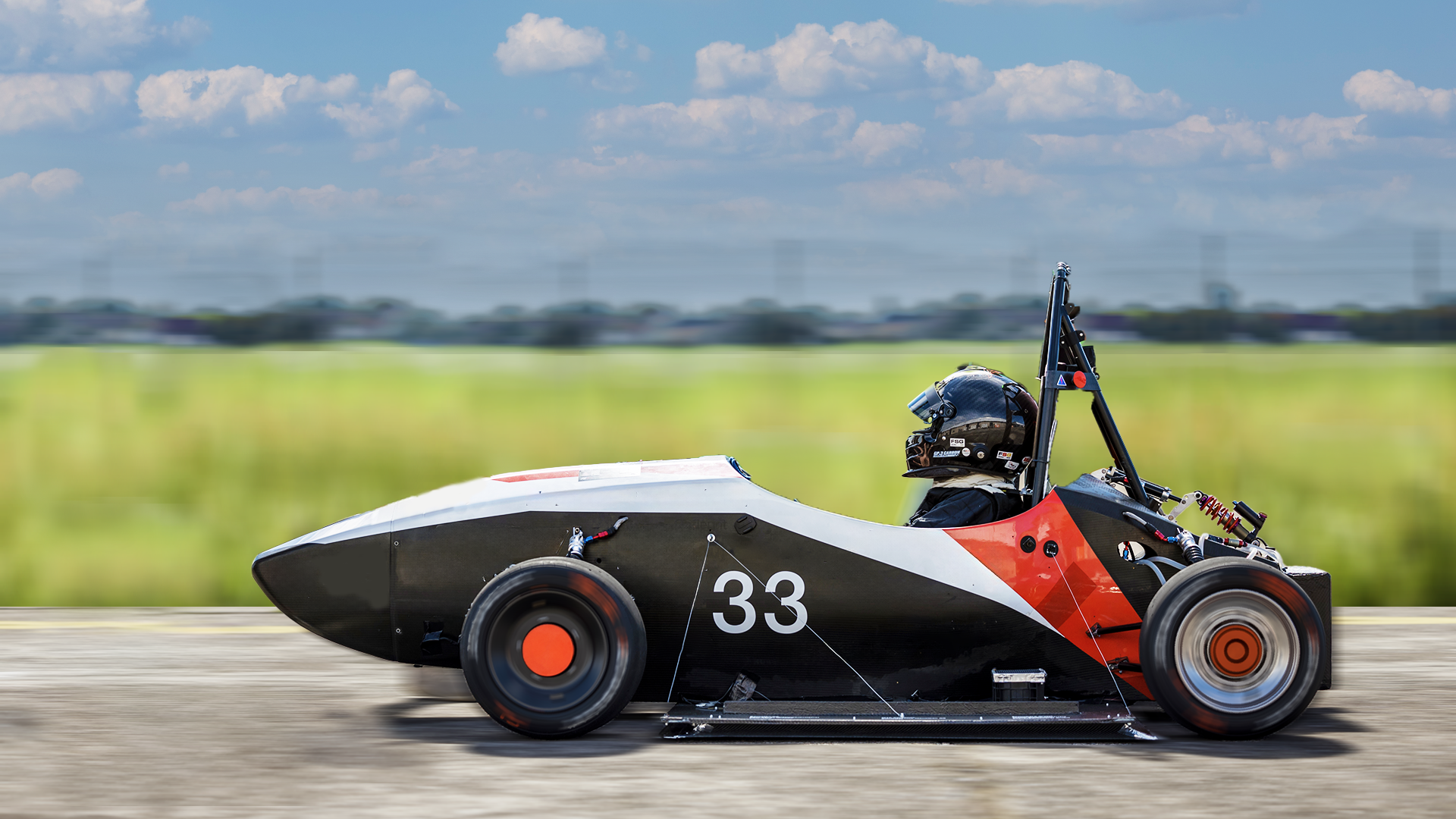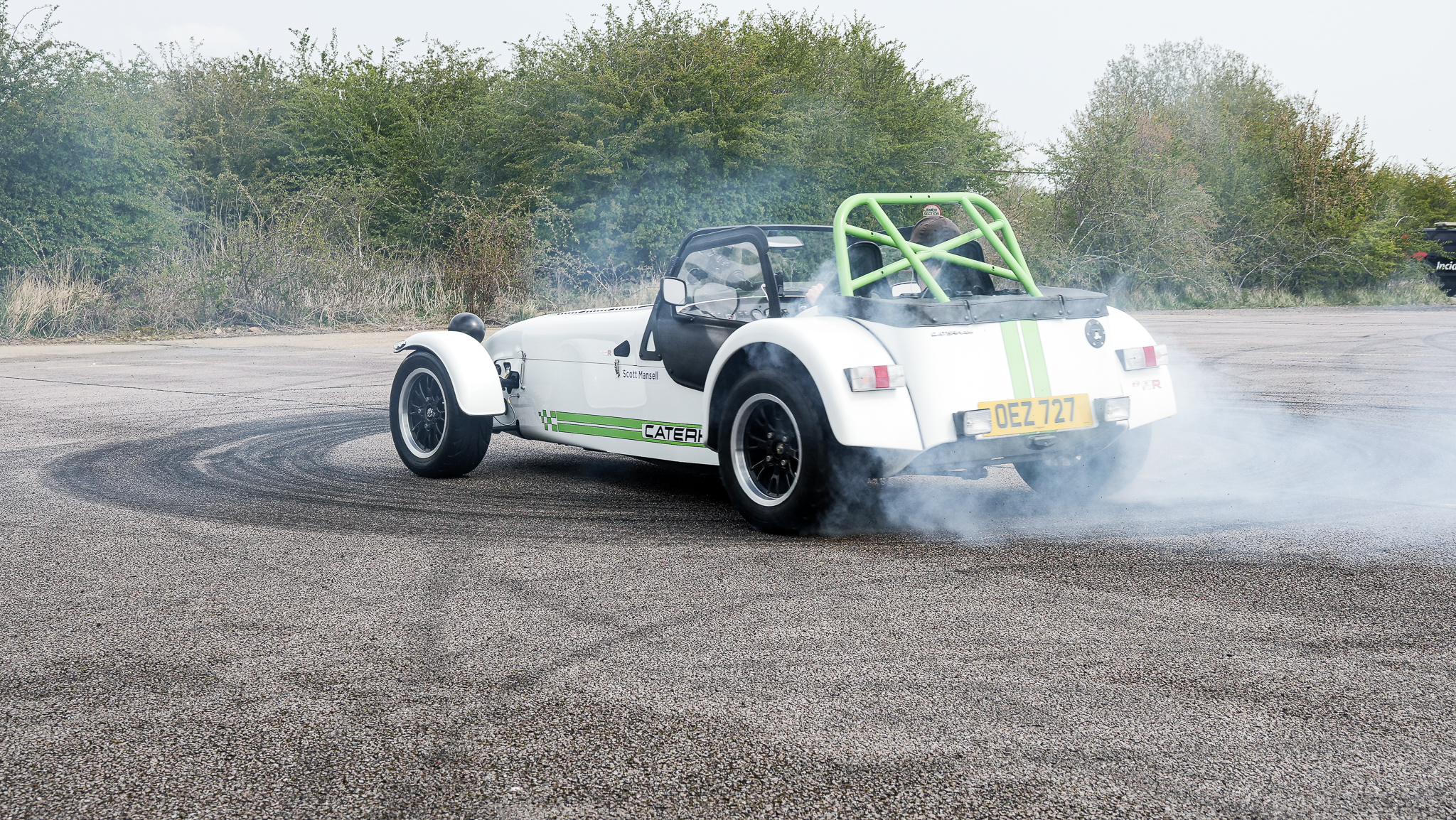Circuit Driving in the Rain

Driving in wet conditions is more challenging than in the dry, this is why in a wet race the grid will be generally more spread out than in the dry. Unfortunately for some, the difference in driving ability is highlighted. There are just more factors to think about – including less, and inconsistent, grip levels.
This article will take a look at some tips and techniques you can use when driving on a wet circuit to make you faster, safer and more consistent.
Have a Look Around
Often, in the UK especially, the conditions are variable. Wet to dry and dry to wet, the grip levels will always be changing. When the circuit conditions are like this the first thing I get my drivers to do is take a look around the circuit – paying attention to sections that look particularly dry or wet. Obviously, if there is a section that is beginning to dry up it will likely be grippier than a damp or wet section – so use it!
Around the Outside
One of the biggest differences when driving on a wet circuit is the optimum racing line, which will likely differ substantially to the dry racing line.
A race circuit, when driven on in dry conditions, will build up a layer of rubber on the ideal dry line. This layer is built up after many tests, race and track days where drivers have continually driven over the same section of the circuit. When the rain comes, this ideal dry line becomes very slippery and not the area to drive on – in fact, the ideal wet line is generally around the outside of the dry line.
I will say, however, the difference in grip levels between the dry and wet lines will vary circuit-to-circuit and even between days at the same circuit (depending what has been running at the circuit previously).
The image below shows an example of the differences in wet (blue) and dry (red) lines around Luffield at Silverstone. Please note that Brooklands (a left-handed corner) is close to the entry of Luffield, hence the unusual entry line.
The red line is covered in rubber, which makes it great in the dry – but not so good in the wet. So, even though the blue line has a longer distance around the outside, the large difference in grip levels more than makes up for it.

A Word of Warning
Although through most of the corner you’ll be on the ‘clean’ and grippier asphalt, at some point towards the corner’s exit you’ll rejoin the dry line and the slippery rubber. As you get to this point you’ll want the car as straight as possible, so your acceleration doesn’t turn into a big slide and costs you time.
Additionally, having the car positioned on the outside of the corner enables you to get your car straight sooner, which allows you to push full throttle sooner – accelerating yourself out of the corner and down the next straight.
‘Square Off’ Each Corner
So now you know where the grippier part of each corner usually hides. However, in wet conditions you must focus more on the straights.
As just mentioned, you’ll want to get your car out of each corner as quickly as possible. You’re much better off compromising a little corner speed in order to get out onto the straight faster, therefore carrying your speed, and advantage, down the whole of the next straight. You do this by ‘squaring off’ each corner.
The image below shows the dry (red) and wet (blue) racing lines around the right-handed hairpin at Donington Park. As you can see, the wet line goes in deeper and around the outside of the traditional dry line – where the circuit is rubber-free and more grippy.
It just so happens that this is the perfect position to be able to cut back and straighten the exit as much as possible. The sooner you can get your car straight, the sooner you can get to power and get your car accelerating away from the corner.

Smoothness is Key
As you’re aware, how you use the throttle and brake pedal in the dry is critical. But it’s even more important in the wet. The grip level is lowered somewhat and so it’s impossible to accelerate or brake as hard. The pedals really need to be ‘squeezed’ on and off. If you require deceleration in a corner your foot should ‘breathe’ off the pedal rather than panicking and coming off completely – which will upset the car and could cause a spin.
If you’re too hard on the accelerator you will get too much wheelspin, which will hinder your corner exit speed. However, if the car feels like it’s on rails you’re likely driving too slowly – a little wheelspin is OK, it lets you know you’re at the edge of grip. Like driving in the dry, being quick is a balancing act – the margins are just finer in the rain.
Vision
In the wet, especially in traffic, peripheral vision is very important. Spray can make it hard to see even 50m in front of you, so spotting braking points can sometimes be difficult. Your peripheral vision becomes increasingly important – a marshals post, the start of a curb or the end of some Armco are all good examples.
The image below shows a sunny Silverstone, somewhere close to the braking zone for Brooklands. You would generally use a braking point such as the ones circled even in the dry, but they’re even more important in wet conditions, when you may not be able to see the apex as clearly as you’d like.
Obviously, it’s not necessary to brake exactly at the start of the curb, or where the barrier changes from red to white, but it’s to be used as a reference – most likely is that you’d start braking 10 meters before, or after… depending on your bravery. The point is to look out for points like this on your first few laps, so you have a decent reference and make your time on circuit as efficient as possible.

Aquaplaning
Aquaplaning is no fun at all. If you’ve experienced it you’ll know what I’m talking about. For those of you lucky enough to have never aquaplaned, it’s when the tyre’s tread cannot cut through standing water quickly enough and the car literally skims over the top of it – with little to no control. Aquaplaning will only happen when there is a reasonable amount of standing water on the circuit, so watch out for those puddles!

So, what should you do if you feel the car lifting off the circuit and aquaplaning? As little as possible. A slight lift of the accelerator (to reduce the chances of wheelspin) is enough, not too much however as you don’t want to transfer too much weight to the front of the car. Do not brake or steer, just hold tight for the brief moment when the car is no longer in contact with the asphalt and you should come out the other side unscathed.
In Conclusion
Driving on a wet circuit can be immense fun, especially when racing and especially when you’re quick. The more seat time you have in the rain, the more comfortable you will be and as your experience grows the scenarios that used to surprise/scare you will become second nature and predictable.
Driving in the wet is all about exploring; finding that better line, avoiding the standing water and picking out that braking point through the spray. Combine that with continually changing conditions and you have a serious challenge. And some serious fun.














